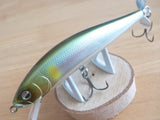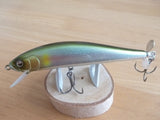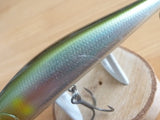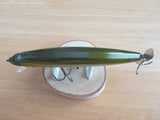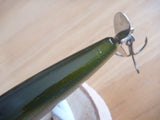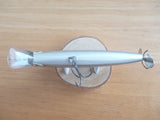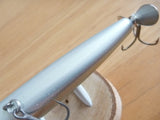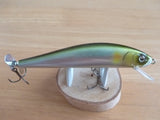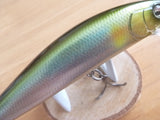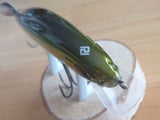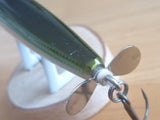Condition: Used
Length: 107.5mm
Weight: 1/2oz
Type: Floating
The SCRATCH's appearance and the power of the action it produces are its strong points, and it is capable of pulling out quality fish that are in good condition for a one-hit kill. In contrast, ANSWER can produce a variety of delicate and delicate actions that can technically lure nervous fish in situations where SCRATCH cannot be pulled to the surface.
On a slow to medium retrieve, the lure swims gracefully across the water's surface and sub-surface, producing ideal ripples on the water's surface and splash and crunch sounds from the tail peller. The waking action, which is not too strong, appeal fish.
The ANSWER shows a wide variety of expressions depending on the strength of the rod work and the stroke. The ANSWER floats at a slightly downward angle, and when rod work is applied, it lowers its head and dives into the water. The tail peller rotates to produce a sweet sound and splash that attracts fish. If the rod work is increased, the lure will twist and dive about 50 cm below the surface with bubbles on its body. It appeals like a real bait fish and can appeal to fish stationed deep in the water.
It also dives as if bowing in place with extremely gentle rod work, as if the weight of the rod "taps" the line slack. Rotating the tail peller during the dive produces a gentle splash and sound. When interwoven with a long stay, this method can make even nervous fish, such as those in the after-spawn.
The ANSWER is set up so that the spinning peller rotates to generate a variety of elements when reeling in or diving, but the peller also rotates firmly when surfacing after a dive. The spinning peller becomes a bite trigger when the lure surfaces slowly after attracting fish with a dive action. The ANSWER has the power to attract fish from deeper water than you can imagine, so please be aware of the surfacing and staying action.
Tail Peller
The tail peller is an original designed to maximize the attractiveness of the ANSWER, and was developed based on a thorough examination of its shape, aperture angle, material, strength, weight, and other aspects. Even when the propulsive force of surfacing is extremely weak, the high speed rotation of the propeller is the final push to get the fish to bite.












